
Key Takeaways
- Bay leaves contain powerful antioxidants that can help reduce inflammation and protect against chronic diseases like heart disease.
- Regular consumption of bay leaf tea may help regulate blood sugar levels, making it beneficial for people with Type 2 diabetes.
- The essential oils in bay leaves have antimicrobial properties that can help fight bacterial and fungal infections.
- Bay leaf tea can aid digestion by reducing bloating, gas, and indigestion while promoting better nutrient absorption.
- Beyond cooking, bay leaves can be used in teas, infused oils, and even topical applications for skin and hair health.
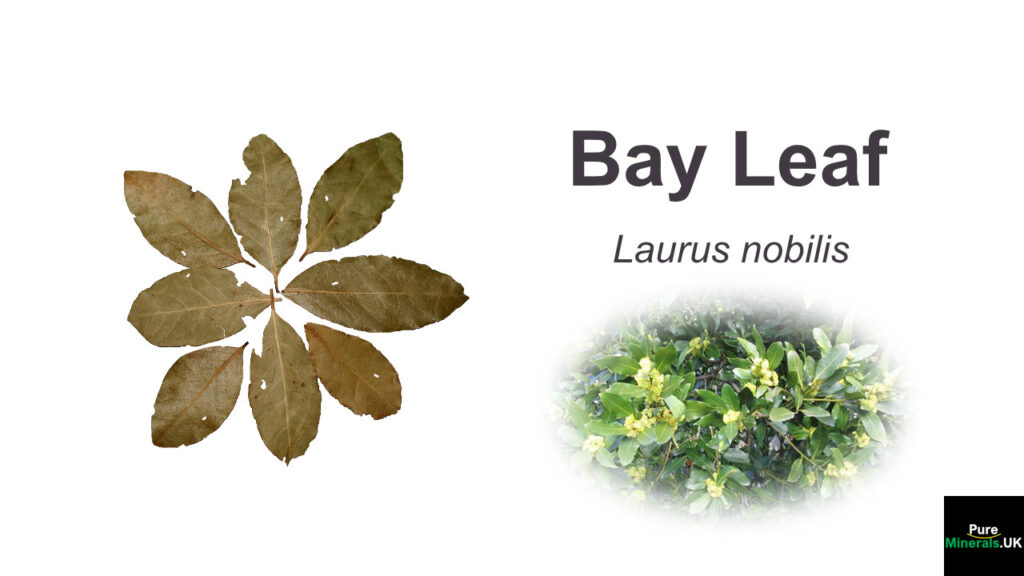
Updated on November 1, 2025 — we’ve added fresh insights on using Bay Leaves in everyday cooking and nutrition.
That little leaf sitting in your spice cabinet isn’t just for flavoring soups and stews – it’s a powerhouse of health benefits waiting to be unleashed. Bay leaves have been used for thousands of years, dating back to ancient Rome and Greece, where they were symbols of wisdom, peace, and protection.
Bay Leaves: The Ancient Healing Herb You Need in Your Kitchen
Bay leaves come from the bay laurel tree (Laurus nobilis), an evergreen native to the Mediterranean region. What was once crowned upon the heads of Olympic champions and Roman emperors now serves as a humble yet powerful addition to our culinary and medicinal arsenal. These aromatic leaves have traveled through time not just for their distinctive flavor but for their impressive medicinal properties that modern science is only beginning to fully understand.
While many people pick bay leaves out of their dishes before eating, the nutrients and beneficial compounds they infuse into food during cooking offer remarkable health advantages. From improving digestion to potentially helping manage diabetes, bay leaves deserve more attention than they typically receive in modern kitchens.
What Makes Bay Leaves Special
Bay leaves contain a unique combination of compounds that contribute to their health-promoting properties. They’re rich in essential oils, particularly eucalyptol (also called 1,8-cineole), which gives them their distinctive aroma and many of their medicinal effects. These leaves also contain specialized catechins and polyphenols – powerful plant compounds that act as antioxidants in the body. For more information on similar aromatic herbs, explore the health benefits of basil.
Unlike many herbs that lose their potency when dried, bay leaves actually intensify in flavor and therapeutic properties during the drying process. This is why dried bay leaves are preferred in both cooking and medicinal preparations. The drying process concentrates the essential oils and makes the beneficial compounds more accessible.
Nutritional Profile at a Glance
Bay leaves pack an impressive nutritional punch for their small size. They’re a good source of vitamins A, B6, and C, providing support for immune function, vision health, and energy metabolism. They also contain significant amounts of manganese, iron, calcium, and potassium – minerals essential for bone health, oxygen transport, and proper muscle and nerve function.
Bay Leaf Nutrition (per 100g dried leaves)
Vitamin A: 6,185 IU
Vitamin C: 46.5 mg
Iron: 43 mg
Manganese: 8.2 mg
Calcium: 834 mg
Dietary fiber: 26.3 g
The fiber content in bay leaves is particularly noteworthy, as it supports digestive health and helps maintain stable blood sugar levels. While you won’t eat 100g of bay leaves (nor should you), even the small amounts used in cooking or tea can contribute valuable nutrients to your diet.
Ready to feel your absolute best? Unlock vibrant, natural energy and nourish every cell in your body with the power of our 16 essential vitamins and 74+ pure plant-derived minerals – much more than in Bay leaves. Discover the difference today – visit our shop page.
7 Proven Health Benefits of Bay Leaves
The medicinal use of bay leaves spans centuries and cultures, but modern research is now validating many of these traditional applications. Here are seven evidence-backed health benefits that make bay leaves worth incorporating into your wellness routine.
1. Powerful Anti-inflammatory Properties
Inflammation lies at the root of many chronic diseases, from arthritis to heart disease. Bay leaves contain potent anti-inflammatory compounds that can help reduce inflammation throughout the body. The parthenolide content in bay leaves specifically helps inhibit the release of inflammatory cytokines, potentially providing relief for those suffering from inflammatory conditions.
A study published in the Journal of Clinical Biochemistry and Nutrition found that consuming bay leaves regularly helped reduce inflammatory markers in the body. For those with arthritis, a warm compress of bay leaf tea applied to joints or drinking bay leaf tea may help reduce pain and swelling, though more clinical research is needed to confirm these traditional uses.
2. Digestive System Support
One of the most well-established benefits of bay leaves is their positive effect on digestion. Bay leaves stimulate digestive enzymes, encouraging the body to break down food more efficiently and absorb nutrients more effectively. The organic compounds in bay leaves help soothe irritable bowel syndrome, reduce bloating, and relieve gas.
In traditional medicine, bay leaf tea has long been used to treat stomach ulcers and indigestion. The leaves contain compounds that may help reduce the growth of Helicobacter pylori, the bacteria responsible for many ulcers. Simply steeping a couple of dried bay leaves in hot water for 10 minutes creates a soothing digestive tonic that can be enjoyed after meals.
3. Blood Sugar Regulation for Diabetics
One of the most promising benefits of bay leaves is their potential to help regulate blood sugar levels. Research published in the Journal of Clinical Biochemistry and Nutrition showed that consuming ground bay leaves daily for 30 days significantly improved insulin function in people with Type 2 diabetes. The study found that participants experienced a reduction in blood glucose levels by up to 26% after consistent use, highlighting the importance of addressing the root causes of bad health.
The specific compounds in bay leaves appear to enhance insulin receptor function, allowing cells to respond better to insulin and take up glucose more efficiently. This improved insulin sensitivity can be crucial for diabetes management and prevention. For those concerned about blood sugar levels, incorporating bay leaf tea into a daily routine may offer supportive benefits alongside medical treatment.
4. Heart Health and Cholesterol Management
The same studies that demonstrated blood sugar benefits also revealed bay leaves’ positive effects on cholesterol levels. Regular consumption of bay leaves has been shown to reduce total cholesterol, LDL (bad) cholesterol, and triglycerides while increasing HDL (good) cholesterol levels. This improved lipid profile contributes to better cardiovascular health and reduced risk of heart disease.
Bay leaves contain significant amounts of rutin and caffeic acid, antioxidants that help strengthen capillary walls in the heart and prevent oxidative damage to the cardiovascular system. Additionally, the potassium in bay leaves helps regulate heart rate and blood pressure, offering comprehensive heart health support through multiple mechanisms.
5. Respiratory Relief
The eucalyptol in bay leaves makes them excellent for respiratory health. This compound has expectorant properties that help clear mucus from the lungs and sinuses, providing relief from congestion, coughs, and sinus infections. Inhaling the steam from bay leaf tea can help open breathing passages and ease symptoms of respiratory conditions.
Traditional remedies often recommend bay leaf steam inhalation for bronchitis and asthma symptoms. The anti-inflammatory properties of bay leaves may also help reduce swelling in respiratory passages, making breathing easier during colds or allergy flare-ups. A simple steam inhalation can be prepared by adding 3-4 bay leaves to a pot of boiling water, removing from the heat, and carefully breathing in the steam with a towel draped over the head.
6. Stress Reduction and Better Sleep
The aromatic compounds in bay leaves have mild sedative properties that can help calm the nervous system and reduce stress. In folk medicine, bay leaf tea has been used as a natural remedy for anxiety and insomnia. The linalool content in bay leaves has similar effects to those found in lavender, promoting relaxation and improved sleep quality.
Simply keeping a small sachet of dried bay leaves under your pillow or brewing a cup of bay leaf tea before bedtime can help create a more restful sleep environment. The gentle, earthy aroma helps trigger the body’s relaxation response, making it easier to wind down at the end of a busy day.
7. Antimicrobial Protection
Bay leaves possess impressive antimicrobial properties that help fight various bacteria and fungi. Research has shown that bay leaf essential oil can inhibit the growth of foodborne pathogens like Salmonella and E. coli, as well as Candida and other fungal infections. This makes bay leaves not only a flavoring agent but also a natural food preservative.
These antimicrobial benefits extend to personal care as well. Bay leaf infusions have been used traditionally to treat skin infections and dandruff when applied topically. The antibacterial properties may also help with minor wound healing and preventing secondary infections. For a simple antimicrobial rinse, steep bay leaves in hot water, cool completely, and use as a final hair rinse or skin toner.
How to Use Bay Leaves in Your Daily Life
Incorporating bay leaves into your routine goes well beyond adding them to soups and stews. From beverages to beauty treatments, these versatile leaves offer multiple ways to access their health benefits. The key is understanding how to extract the beneficial compounds effectively and which preparation methods work best for different purposes. With a little creativity, bay leaves can become a staple in your natural health arsenal.
Brewing the Perfect Bay Leaf Tea
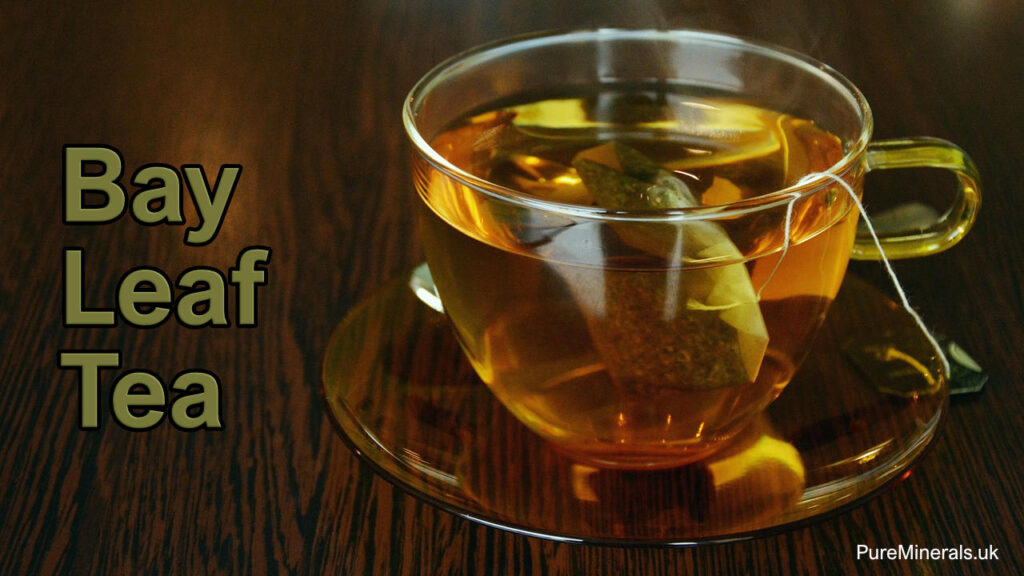
Bay leaf tea is perhaps the simplest way to enjoy the health benefits of this powerful herb. To make a basic bay leaf tea, place 2-3 dried bay leaves in a cup and pour boiling water over them. Cover and steep for 5-7 minutes, then remove the leaves before drinking. For enhanced flavor and additional benefits, consider adding a cinnamon stick, a slice of ginger, or a teaspoon of honey. You might also explore adding a pinch of turmeric to your tea for its anti-inflammatory properties.
For a stronger medicinal infusion, you can simmer 4-5 bay leaves in 2 cups of water for 10 minutes with the pot covered. This longer extraction process releases more of the beneficial compounds. This stronger preparation is especially useful for digestive issues or when fighting off a cold. Aim to drink 1-2 cups daily for therapeutic benefits.
Bay Leaf Oil Applications
Bay leaf essential oil offers concentrated benefits and can be used in aromatherapy, topical applications, or massage oils. When using essential oil, always dilute it with a carrier oil like coconut or jojoba oil before applying to skin (typically 3-5 drops of essential oil per tablespoon of carrier oil). This diluted oil can be massaged into joints for inflammation relief or into the temples for headache support.
DIY Bay Leaf Massage Oil Recipe
3 tablespoons olive or coconut oil
10 drops bay leaf essential oil
5 drops lavender essential oil (optional)
3 drops peppermint oil (optional for pain relief)
Mix thoroughly and store in a dark glass bottle. Massage into affected areas as needed. For more information on the benefits of bay leaf, check out this bay leaf tea benefits article.
For those who prefer to make their own infused oil, you can place 1/4 cup dried bay leaves in 1 cup of olive oil in a sealed jar. Let it sit in a cool, dark place for 2-4 weeks, shaking occasionally. Strain out the leaves and use the infused oil for cooking or topical applications. This homemade infusion contains beneficial compounds without the concentration (and potential sensitivity issues) of essential oils.
Bay leaf oil can also be used in a diffuser to purify air and create a calming atmosphere. The antimicrobial properties help reduce airborne bacteria while providing respiratory benefits. Just 3-4 drops in a diffuser can transform your space into a healing environment, especially beneficial during cold and flu season.
Whole Leaves vs. Ground Bay Leaf Powder
While whole bay leaves are the most common form, ground bay leaf powder offers unique advantages for certain applications. Ground leaves release their beneficial compounds more quickly and can be incorporated into recipes where whole leaves would be impractical. The powder works exceptionally well in smoothies, baked goods, and spice rubs where you want the nutritional benefits without having to remove the leaves later.
When using ground bay leaf powder, remember that it’s much more potent than whole leaves. Start with just 1/8 teaspoon in recipes that would normally call for a whole leaf. Unlike whole bay leaves that are removed before eating, the powder remains in the dish, delivering a more concentrated dose of both flavor and health benefits. You can purchase bay leaf powder or make your own by grinding dried leaves in a dedicated spice grinder until they become a fine powder.
5 Delicious Bay Leaf Recipes to Try Today
Ready to experience the health benefits of bay leaves beyond basic tea? These simple recipes showcase the versatility of this powerful herb while delivering impressive health benefits. Each recipe harnesses bay leaves’ unique properties in different ways, providing multiple options for incorporating them into your wellness routine. For more ideas, you might explore the health benefits of allspice as a complementary spice.
1. Immune-Boosting Bay Leaf and Ginger Tea
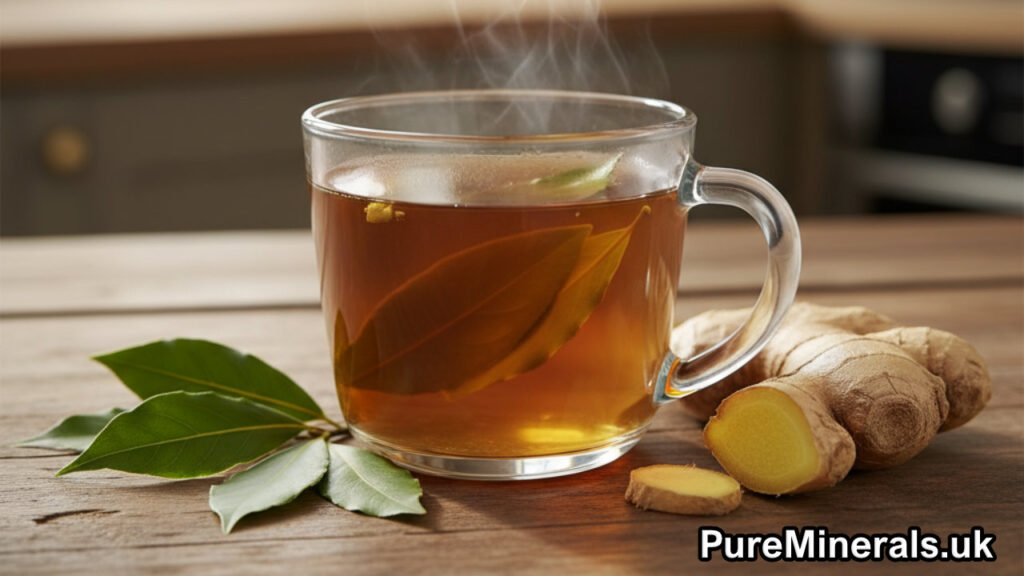
This enhanced tea combines the anti-inflammatory properties of bay leaves with the immune-boosting power of ginger for a powerful health tonic. In a small pot, bring 2 cups of water to a boil with 3 bay leaves, a 1-inch piece of fresh ginger (sliced), 1 cinnamon stick, and 2 cloves. Reduce the heat and simmer covered for 10 minutes. Strain, add honey and lemon to taste, and sip slowly. This warming brew is especially beneficial during cold and flu season or when feeling the first signs of illness.
2. Mediterranean Bay Leaf Soup
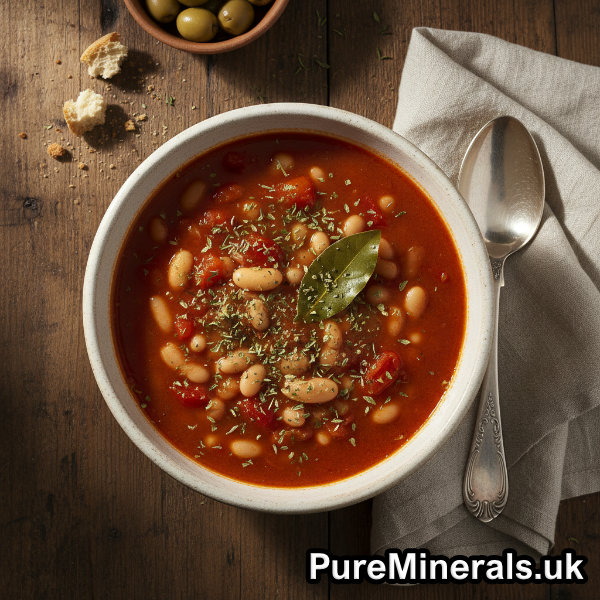
This hearty soup delivers both comfort and healing properties. In a large pot, sauté 1 chopped onion, 2 carrots, and 2 celery stalks in olive oil until soft. Add 4 cups vegetable broth, 1 can drained white beans, 1 can diced tomatoes, 3 bay leaves, 1 teaspoon each of dried oregano and thyme, and simmer for 20 minutes. Add 2 cups chopped kale and cook until wilted. Remove bay leaves before serving. The combination of bay leaves and other Mediterranean herbs creates an anti-inflammatory meal that supports digestive health and provides sustained energy.
3. Bay Leaf Infused Olive Oil

Create a flavorful cooking oil with added health benefits by infusing olive oil with bay leaves. Gently warm 2 cups of extra virgin olive oil in a saucepan (do not boil). Add 8-10 dried bay leaves and remove from heat. Let steep for 1 hour, then transfer to a clean glass bottle with the bay leaves. Store in a cool, dark place for two weeks, shaking occasionally. Strain out the bay leaves and use this aromatic oil for cooking, salad dressings, or drizzling over finished dishes. The oil captures bay leaves’ cardioprotective compounds and anti-inflammatory benefits while adding subtle flavor to your meals.
4. Bay Leaf Rice Pilaf
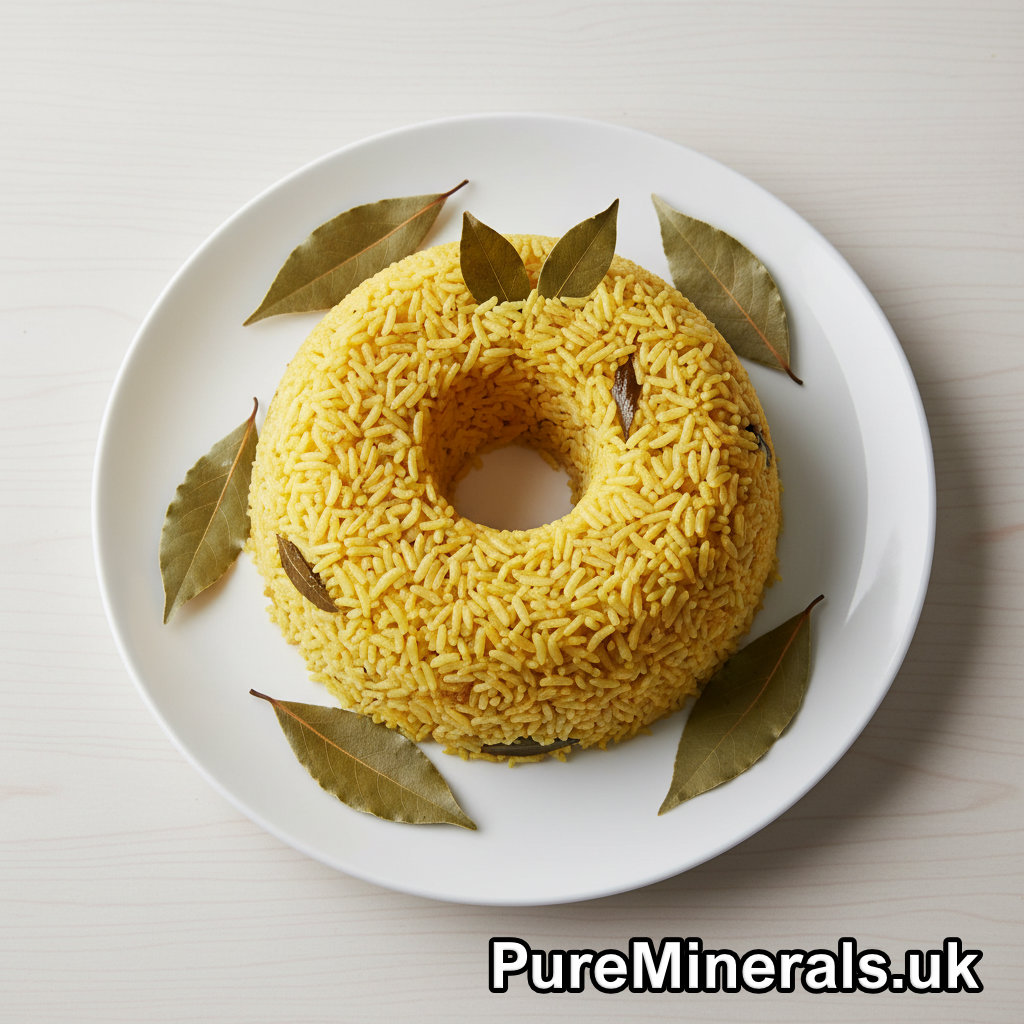
This simple rice dish showcases bay leaves’ ability to infuse foods with both flavor and health benefits. In a medium saucepan, sauté 1/2 chopped onion and 1 minced garlic clove in olive oil until translucent. Add 1 cup basmati rice, 2 bay leaves, and 1/4 teaspoon turmeric, stirring to coat the rice. Pour in 2 cups of broth, bring to a boil, then reduce the heat and simmer covered for 18 minutes until the liquid is absorbed. Remove from heat, let stand covered for 5 minutes, then fluff with a fork and remove bay leaves before serving. The combination of bay leaves and turmeric creates a potent anti-inflammatory side dish that also supports digestion.
5. Aromatic Bay Leaf Bath Soak

Harness the external benefits of bay leaves with this soothing bath preparation. Place 15-20 dried bay leaves in a muslin bag or clean sock and secure tightly. Hang it from the faucet as you fill your bathtub with warm water, allowing the running water to pass through the leaves. For enhanced benefits, add 1 cup of Epsom salts to the bath. Soak for 20-30 minutes to ease muscle pain, reduce stress, and benefit from the antimicrobial properties of bay leaves on your skin. This bath soak is especially helpful after intense physical activity or during times of high stress.
Sourcing and Storing Bay Leaves for Maximum Potency
The medicinal potency of bay leaves depends significantly on their quality and how they’re stored. Knowing how to select, store, and preserve these leaves ensures you’ll get the maximum health benefits from every leaf. With proper care, bay leaves can maintain their beneficial properties for extended periods, making them an economical addition to your natural health toolkit.
Fresh vs. Dried: Which to Choose
Both fresh and dried bay leaves offer health benefits, but their applications differ slightly. Fresh bay leaves have a milder, more resinous flavor and are excellent for recipes requiring long cooking times, like stews and braises. Their medicinal properties are present but less concentrated than in dried leaves. If using fresh leaves for tea or therapeutic purposes, you’ll need to use more leaves to achieve similar effects as dried leaves.
Dried bay leaves have more concentrated essential oils and are generally preferred for medicinal purposes. The drying process intensifies both flavor and therapeutic compounds, making dried leaves more potent in smaller amounts. For most health applications, dried bay leaves are the preferred choice unless you have direct access to a bay laurel tree. When purchasing dried leaves, look for ones that are still greenish (not brown), fragrant, and free from blemishes or discoloration. If you’re interested in exploring other natural remedies, consider learning about the benefits of angelica as well.
Proper Storage Methods
To maintain their medicinal properties, store dried bay leaves in an airtight container away from light, heat, and moisture. A glass jar with a tight-fitting lid kept in a cool pantry is ideal. Avoid storing bay leaves near the stove or in clear containers exposed to light, as heat and light can degrade the essential oils that provide many of their health benefits. For maximum potency, consider storing them whole rather than crushed, as the intact leaf structure better preserves the volatile compounds.
How Long Bay Leaves Last?
When stored properly, dried bay leaves can maintain their flavor and medicinal properties for 1-3 years. You’ll know they’re past their prime when the aroma becomes faint and the color fades from green to brown. Fresh bay leaves have a much shorter lifespan, lasting only about a week in the refrigerator when wrapped in a slightly damp paper towel and stored in a perforated plastic bag. For more on the root causes of bad health, consider exploring other natural remedies.
If you have access to fresh bay leaves in abundance, consider drying them yourself to extend their usability. Simply tie small bunches with a string and hang them in a warm, well-ventilated area away from direct sunlight until completely dry (usually 1-2 weeks). Once dried, they can be stored using the methods described above for long-term use.
Safety Precautions and Potential Side Effects
While bay leaves offer numerous health benefits, it’s important to use them properly and be aware of potential risks. Like any medicinal herb, bay leaves can cause adverse effects in certain individuals or when used incorrectly. Understanding these considerations ensures you can enjoy their benefits safely. For more information on maintaining good health, you can explore the root causes of bad health.
The most important safety rule with bay leaves is to remove whole leaves before consuming the dish they’ve flavored. Bay leaves remain stiff even after cooking and can cause choking or internal scratches if swallowed whole. This is why recipes typically call for removing bay leaves before serving.
Important Bay Leaf Safety Considerations
• Always remove whole bay leaves before serving food
• Start with small amounts when first trying bay leaf tea
• Discontinue use if allergic reactions occur
• Consult healthcare provider before medicinal use if pregnant, nursing, or taking medications
• Use properly diluted essential oil only for external use
Some individuals may experience allergic reactions to bay leaves, especially those with allergies to other plants in the Lauraceae family. Symptoms can include skin rashes, itching, or digestive upset. If you experience any adverse reactions, discontinue use immediately and consult a healthcare provider.
Bay leaf essential oil should never be consumed internally and must always be diluted before topical application. The concentrated oil can cause skin irritation and sensitivity when used undiluted. Always perform a patch test before applying bay leaf oil preparations to larger areas of skin.
Who Should Avoid Bay Leaves
Those scheduled for surgery should stop using bay leaves medicinally at least two weeks before their procedure, as bay leaves may affect blood sugar levels and could potentially interfere with blood sugar control during and after surgery. Diabetics using bay leaves for their blood sugar-lowering effects should monitor their levels closely, as the combination with diabetes medications could potentially cause hypoglycemia.
Pregnant and breastfeeding women should exercise caution with medicinal amounts of bay leaves. While the culinary use of bay leaves during pregnancy is generally considered safe, therapeutic doses have not been well-studied in pregnant women. It’s best to consult with a healthcare provider before using bay leaf preparations medicinally during pregnancy or while breastfeeding.
Recommended Dosages
For general health maintenance, 1-2 cups of bay leaf tea daily is considered a safe and effective amount for most adults. This can be prepared using 1-3 dried bay leaves per cup of water. For culinary purposes, 1-2 leaves per pot of soup or stew is typically sufficient to impart both flavor and health benefits.
When using ground bay leaf powder, start with just 1/8-1/4 teaspoon daily, gradually increasing if needed. Remember that the ground form is more potent, so smaller amounts are necessary. If you’re using bay leaves specifically for blood sugar management or other therapeutic purposes, work with a healthcare provider to determine the appropriate dosage for your individual needs.
Start Your Bay Leaf Journey Today
From your next pot of soup to your evening cup of tea, bay leaves offer an accessible way to enhance both flavor and wellness in your daily life. Their remarkable versatility makes them suitable for cooking, brewing, topical applications, and more. By understanding the proper ways to harness their potential, you can transform this humble leaf into a powerful ally in your natural health toolkit. For the highest quality bay leaves and other natural health products, The Tea and Coffee Company offers premium dried herbs sourced directly from trusted growers around the world. Additionally, you can explore the science behind bay leaf benefits to fully appreciate their value in your wellness routine.
Frequently Asked Questions
Below are answers to some of the most common questions about bay leaves and their health benefits. These insights will help you use bay leaves more effectively and address concerns you might have about incorporating them into your wellness routine.
Are bay leaves safe to eat whole?
No, whole bay leaves should not be eaten. Even after cooking, they remain stiff and sharp, posing a choking hazard and potential risk for scratching the digestive tract. Bay leaves are meant to impart their flavor and beneficial compounds to food during cooking, then be removed before serving. Always count how many bay leaves you add to a dish so you can ensure all are removed.
If you want to consume bay leaves for their health benefits, ground bay leaf powder is a safer alternative, as it can be fully incorporated into foods without posing a physical danger. Bay leaf tea, where the leaves are steeped but removed before drinking, is another safe way to enjoy their benefits.
How many bay leaves should I use in cooking?
For most recipes, 1-2 bay leaves per pot is sufficient. Bay leaves have a strong flavor that can become overpowering if too many are used. For a standard 4-6 serving soup or stew, one large or two small bay leaves will impart plenty of flavor. Remember that the longer bay leaves cook, the more flavor they release, so for quick recipes, you might need to slightly increase the amount.
Can bay leaves help with weight loss?
Bay leaves may support weight loss efforts through several mechanisms, though they shouldn’t be considered a magic solution. The compounds in bay leaves can help regulate blood sugar and insulin levels, which may reduce cravings and prevent energy crashes that lead to overeating. Additionally, their ability to improve digestion and metabolism can contribute to more efficient processing of foods.
Some practitioners of traditional medicine recommend drinking bay leaf tea before meals to reduce appetite and aid digestion. The mild diuretic effect of bay leaves may also help reduce water retention, though this is a temporary effect rather than true fat loss.
For best results, incorporate bay leaves as part of a comprehensive approach to weight management that includes a balanced diet and regular physical activity. The Journal of Nutrition found that adding bay leaves to meals resulted in lower post-meal blood glucose levels, which can help prevent the insulin spikes associated with fat storage.
What’s the difference between bay laurel and other bay leaf varieties?
True bay leaves come from the bay laurel tree (Laurus nobilis), also known as sweet bay or Mediterranean bay. These are the bay leaves with documented health benefits and the variety recommended for both culinary and medicinal use. They have a complex, aromatic flavor with notes of eucalyptus and cloves.
California bay leaves (Umbellularia californica) are often sold as substitutes but contain different compounds and have a much stronger, almost medicinal flavor that can overwhelm dishes. While they have their own set of potential benefits, they cannot be used interchangeably with true bay leaves in recipes or medicinal preparations.
Indian bay leaves (Cinnamomum tamala), also called tejpat, are actually more closely related to cinnamon than to bay laurel and have a different flavor profile with notes of cinnamon and cassia. They’re common in Indian cooking but don’t offer the same health benefits as Mediterranean bay leaves. Always check the botanical name when purchasing bay leaves for medicinal purposes to ensure you’re getting Laurus nobilis.
How quickly can I expect to see health benefits from using bay leaves?
The timeline for experiencing health benefits from bay leaves varies depending on what you’re using them for. For digestive benefits like reducing bloating or gas, relief can often be felt within 30 minutes of drinking bay leaf tea. For respiratory relief through steam inhalation, the effects are similarly quick, often providing immediate improvement in breathing.
For more systemic benefits like improved blood sugar control or cholesterol reduction, consistent use over several weeks is typically necessary. The study showing improved insulin function in diabetics found significant results after 30 days of daily consumption. Similarly, anti-inflammatory effects tend to build over time with regular use.
